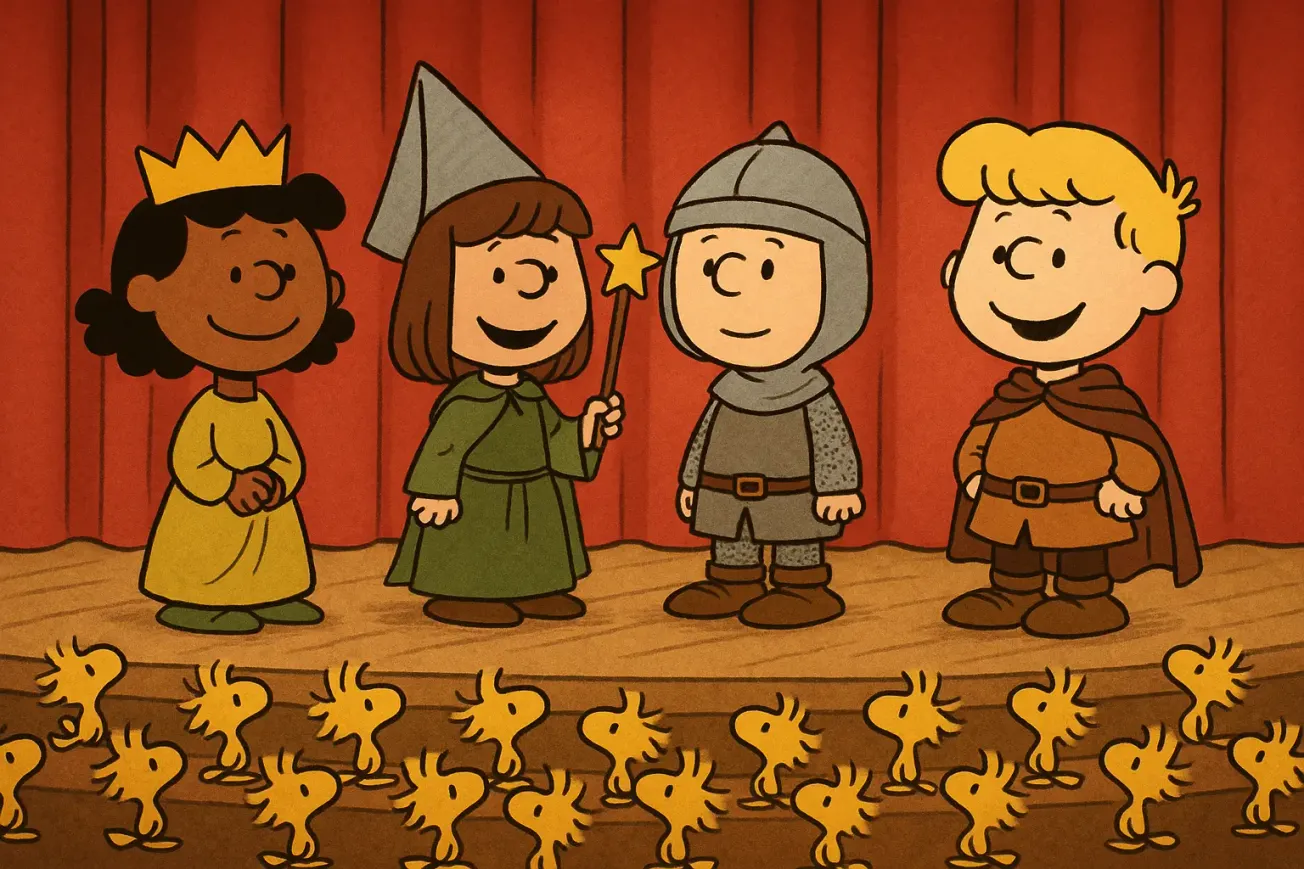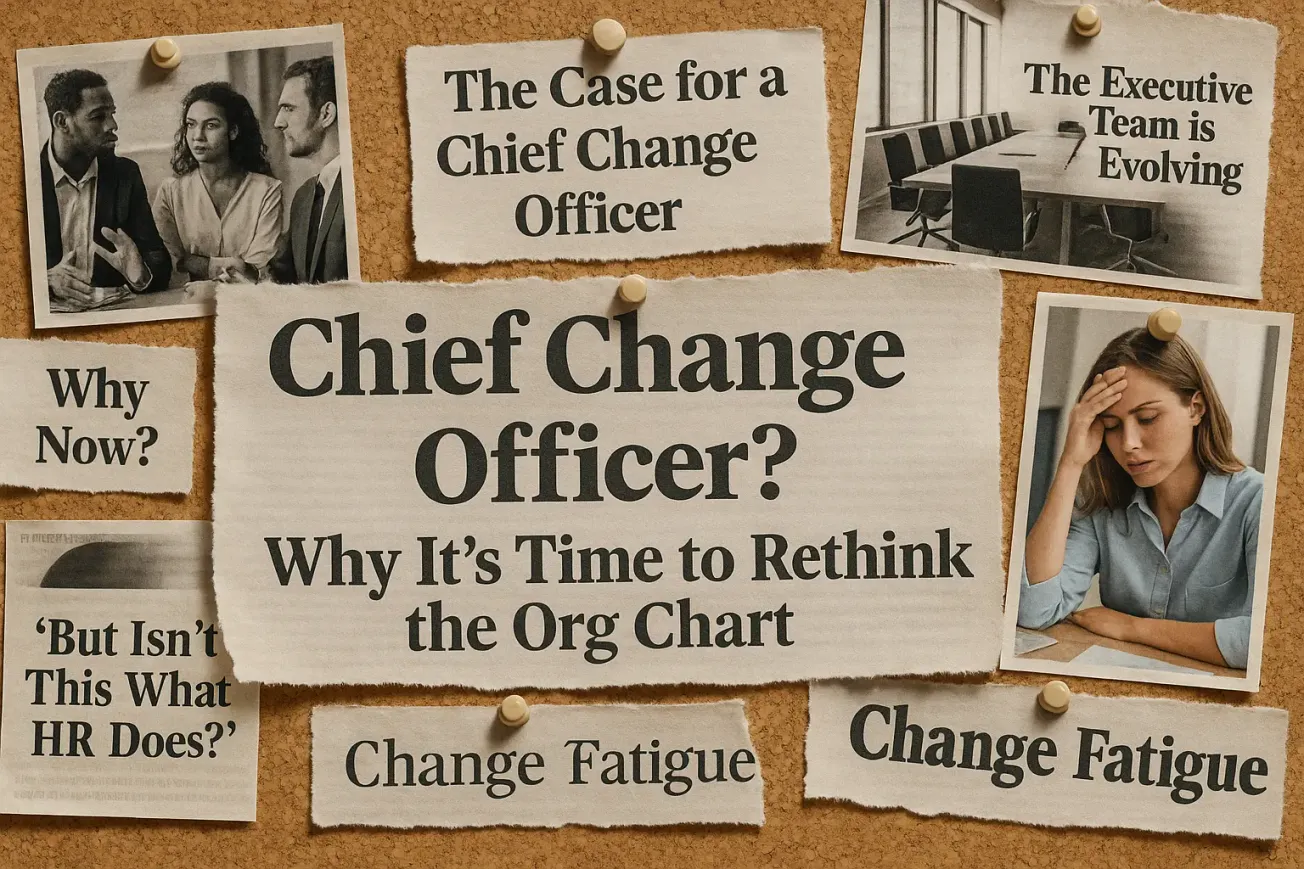From Pretense to Prowess
It starts with the proud declaration: “We’re a Level 3 on the maturity model. Almost at 4.” It’s often delivered with the same confident tone one might use when announcing a record quarter or a major acquisition.
But scratch the surface, and something feels off.
Projects are still derailing. Change fatigue is rampant. Tools go unused, trainings are uninspiring, and teams quietly roll their eyes as another deck extols the virtues of “structured change.”
This is Change Maturity Theater—the elaborate performance of capability without the corresponding competence. A carefully choreographed display meant to impress, not to transform.
And it’s more common than we’d like to admit.
The Allure of the Model, The Pitfall of Pretense
Maturity models hold undeniable appeal. They promise structure. A roadmap. A linear way to demonstrate progress in a nonlinear world. For executives and well-meaning leaders, there’s comfort in scoring well on an assessment—especially one that comes with a clean graphic and a five-point scale.
But somewhere along the way, the model becomes the mission.
The real danger arises when the checkbox becomes the goal, not the capability. When leaders start focusing on appearing to do change well instead of actually enabling it.
We see the symptoms everywhere:
- Tool over Talent: Rolling out sophisticated change platforms while ignoring the human skill gap required to actually use them.
- Process for Process’s Sake: Rigidly applying methodologies in a way that alienates teams rather than aligning with them.
- Training as Optics: Sending employees through generic change training just to meet a quota, with no real integration into daily work.
It breeds cynicism. Especially from the people who care most.
The practitioners. The CX and HR leaders. The AI teams trying to shepherd ethical innovation. These are the champions who can tell the difference between genuine investment and empty display—and when they see the latter, it’s demoralizing. Worse, it risks driving them out entirely.
Moving from Stagecraft to Substance
The good news? You don’t need to storm the stage or dismantle the entire set. Most organizations don’t resist real maturity—they just don’t know what it looks like in action.
The path forward is more gentle than dramatic: a quiet shift from performance to practice, using nudges, not narratives.
Here’s how.
Shift the Spotlight to Outcomes
Stop asking, “Are we following the change process?”
Start asking, “Are we achieving outcomes because of it?”
Focus the conversation on adoption, sustained behavior change, business value realized. Not methodology adherence, but real-world results.
Champion Micro-Maturity
Massive model leaps (from Level 2 to 4) rarely happen cleanly. But small, visible wins do.
Call out specific examples of successful engagement, stakeholder buy-in, or a well-managed transition. These “micro-maturity” wins are credible, contagious, and compound over time.
Let your team see that real capability isn’t abstract—it’s what just happened in last week’s town hall, or yesterday’s launch.
Embrace the Learning Lab Mentality
Organizations stuck in theater are often paralyzed by the fear of imperfection. That fear feeds the performance.
Flip the script. Create space for honest retrospectives—where failed initiatives become valuable case studies. Normalize conversations like, “What would we do differently next time?” and “What blind spots did this reveal?”
True maturity is fueled by reflection, not perfection.
Connect the Maturity to Their “Why”
Help your champions see how this isn’t just an org-wide score—it’s a lever for their own success:
- For AI teams: Faster, more ethical deployments.
- For CX: Smoother transitions for customers.
- For HR: Healthier employee experiences during times of change.
When maturity maps to what they care about, it becomes less about posture and more about power.
Be a Pragmatic Partner, Not a Preacher
Nobody wants another sermon on “best practices.”
Instead, offer timely support—templates, talking points, light-lift interventions they can use today. Act as an embedded ally, not an external critic. Show how strong change practices reduce rework, smooth communications, and elevate outcomes.
Demonstrate, don’t dictate.
Final Thought
Change maturity isn’t a destination to announce in a slide deck. It’s a continuous, messy, deeply human journey. And most organizations aren’t failing out of apathy—they’re stuck in performance because they don’t know another way.
When we redirect the spotlight from the stage to the work itself, when we empower our champions with tools that matter and support that fits, we can shift the story.
Quietly. Persistently. Authentically.
Out of the theater—and into the craft of real change.
ChangeGuild: Power to the Practitioner™
Frequently Asked Questions
What is "Change Maturity Theater"?
Change Maturity Theater refers to when organizations appear to demonstrate high levels of change capability—often referencing their maturity model score—without having the actual behaviors, mindsets, or outcomes to back it up. It’s a performance of competence, not the real thing.
Why do organizations fall into the trap of performative change maturity?
Many organizations are drawn to the structure and clarity of maturity models. But over time, the focus can shift from building capability to hitting benchmarks. This leads to checking boxes, showcasing tools, and completing trainings for optics—rather than enabling real, impactful change.
What are the signs an organization is stuck in Change Maturity Theater?
Common indicators include:
- Investing in tools without building the skills to use them
- Rigidly applying processes without adapting to context
- Offering generic training to meet quotas, not build capability
- Emphasizing assessments over adoption, and image over outcomes
How can leaders nudge their organization toward real change maturity?
Start by shifting focus from process adherence to outcome achievement. Break the model into smaller “micro-maturity” wins. Normalize learning from failed initiatives. Connect change practices to what matters most for key teams. And offer just-in-time support instead of pushing best practices from a distance.
What does "micro-maturity" mean?
Micro-maturity is the practice of celebrating small, practical wins that show real change capability in action—like a successful stakeholder engagement or a proactive risk mitigation. These moments build trust, demonstrate value, and move the organization forward without needing a full maturity model leap.
Curious if your organization is performing or progressing?
At ChangeGuild, we help teams move from theater to transformation.
Backed by decades of real-world ECM experience—including work with Fortune 500s, utilities, and public sector leaders—we turn maturity models into meaningful momentum. Ready to make change real? Let’s talk.








